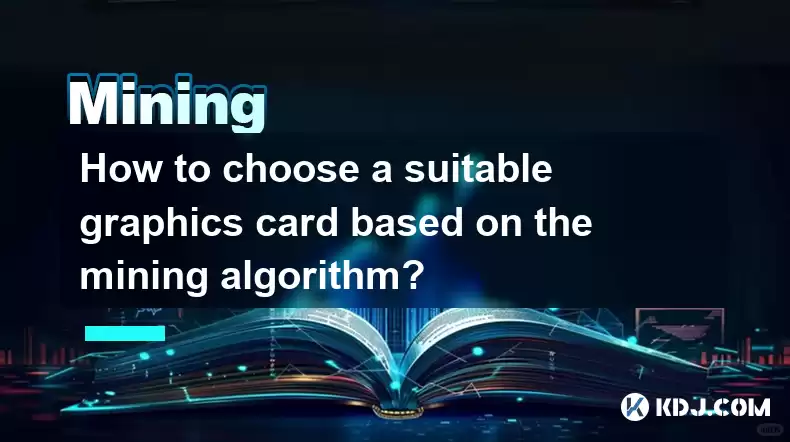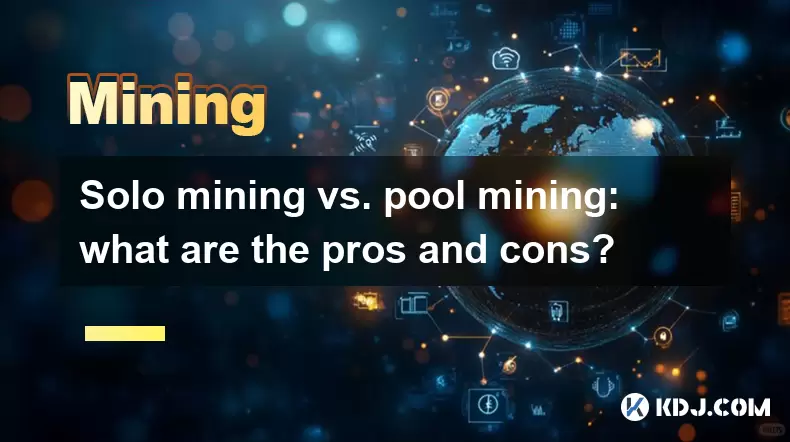-
 Bitcoin
Bitcoin $114200
0.00% -
 Ethereum
Ethereum $3637
0.56% -
 XRP
XRP $2.950
-2.01% -
 Tether USDt
Tether USDt $0.9999
0.02% -
 BNB
BNB $761.0
0.55% -
 Solana
Solana $164.1
-1.38% -
 USDC
USDC $0.9999
0.02% -
 TRON
TRON $0.3332
0.36% -
 Dogecoin
Dogecoin $0.2012
-0.52% -
 Cardano
Cardano $0.7261
-1.41% -
 Hyperliquid
Hyperliquid $37.62
-2.13% -
 Stellar
Stellar $0.3930
-2.65% -
 Sui
Sui $3.441
-0.16% -
 Bitcoin Cash
Bitcoin Cash $563.8
0.70% -
 Chainlink
Chainlink $16.50
0.09% -
 Hedera
Hedera $0.2424
-0.14% -
 Ethena USDe
Ethena USDe $1.001
0.01% -
 Avalanche
Avalanche $22.20
0.00% -
 Litecoin
Litecoin $118.0
-2.48% -
 UNUS SED LEO
UNUS SED LEO $8.991
0.12% -
 Toncoin
Toncoin $3.195
-3.87% -
 Shiba Inu
Shiba Inu $0.00001217
0.12% -
 Uniswap
Uniswap $9.674
-0.21% -
 Polkadot
Polkadot $3.633
1.00% -
 Monero
Monero $295.3
-0.82% -
 Dai
Dai $0.9999
0.00% -
 Bitget Token
Bitget Token $4.321
-0.41% -
 Cronos
Cronos $0.1392
0.73% -
 Pepe
Pepe $0.00001027
-0.89% -
 Aave
Aave $258.5
0.32%
How to choose a suitable graphics card based on the mining algorithm?
GPU selection for cryptocurrency mining hinges on algorithm compatibility; SHA-256 favors high core counts, while Ethash prioritizes memory bandwidth. Power consumption, cooling, and overclocking potential significantly impact profitability, and used GPUs offer cost savings but inherent risks.
Mar 25, 2025 at 01:14 pm

Key Points:
- Understanding the relationship between mining algorithms and GPU requirements.
- Identifying the strengths and weaknesses of different GPU architectures for various algorithms.
- Evaluating power consumption and profitability in relation to GPU selection.
- Considering cooling solutions and overclocking potential.
- Exploring the market for used GPUs and potential risks.
How to Choose a Suitable Graphics Card Based on the Mining Algorithm
Choosing the right graphics card (GPU) for cryptocurrency mining is crucial for profitability and efficiency. The selection process isn't simply about picking the most powerful card; it heavily depends on the specific mining algorithm used for the cryptocurrency you intend to mine. Different algorithms leverage different aspects of GPU architecture, meaning some cards excel where others fail. Understanding this relationship is paramount.
Many popular cryptocurrencies use variations of the SHA-256 algorithm, such as Bitcoin. These algorithms benefit from high hash rates, achieved through many cores capable of parallel processing. Cards with a large number of CUDA cores (Nvidia) or Stream Processors (AMD) are generally preferred for SHA-256 mining. However, raw hash rate isn't the only factor; memory bandwidth and power efficiency also play significant roles.
Ethash, used by Ethereum (before the Merge), and its derivatives, prioritize memory bandwidth and capacity. These algorithms require GPUs with large amounts of fast GDDR memory. While raw compute power is still important, a GPU with less compute power but higher memory bandwidth might outperform a more powerful card with slower memory for Ethash-based coins. This is because the algorithm frequently accesses large amounts of data from memory.
Equihash, another popular algorithm, presents a different challenge. It emphasizes both compute power and memory bandwidth, but in a more balanced manner compared to Ethash. The algorithm’s design makes it less sensitive to extremely high memory bandwidth, placing more emphasis on the overall computational power of the GPU. This means a balance between CUDA cores/Stream Processors and memory speed is ideal.
The algorithm's specific requirements influence power consumption and cooling needs. High-hash-rate cards, especially those designed for SHA-256, tend to consume significantly more power. This directly impacts profitability, as higher electricity costs reduce potential earnings. Efficient cooling solutions, such as custom water cooling loops or high-performance air coolers, are crucial to prevent overheating and maintain stable performance.
Overclocking can boost the hash rate of your GPU, increasing profitability. However, this comes at the cost of increased power consumption and potentially reduced card lifespan. Carefully consider the risks and rewards before overclocking, and always monitor temperatures to prevent damage. Start with conservative overclocks and gradually increase them while observing your GPU's stability.
The cryptocurrency mining market fluctuates significantly. Used GPUs can be a cost-effective option, but careful consideration is needed. Purchasing a used card carries risks, including potential damage or prior overclocking that may shorten its lifespan. Thoroughly inspect any used GPU before purchasing and consider purchasing from reputable sellers with return policies. The price-performance ratio of used cards can vary greatly depending on the model and its condition.
Different GPU Architectures and Their Suitability:
Nvidia GPUs generally dominate the high-end mining market, known for their CUDA cores and mature driver support. AMD GPUs offer a compelling alternative, especially in specific algorithm niches, with their own strengths in memory bandwidth and price-performance ratio in certain segments. The choice depends on the algorithm and your budget.
- Nvidia (CUDA): Generally excel in algorithms like SHA-256 due to high core counts and optimized drivers.
- AMD (Stream Processors): Often offer competitive price-performance ratios, particularly beneficial for algorithms less reliant on sheer compute power.
Power Consumption and Profitability:
The relationship between power consumption and profitability is crucial. Higher hash rates often translate to higher profits, but increased power consumption can offset these gains. Calculate your potential earnings considering electricity costs and the current cryptocurrency price before investing in a mining rig.
- Electricity Costs: A significant factor impacting profitability.
- Cryptocurrency Price: Fluctuations directly affect your potential earnings.
Cooling Solutions and Overclocking:
Effective cooling is essential for maintaining GPU stability and longevity, especially when overclocking. Overclocking can boost hash rates but increases power consumption and heat generation. Consider using advanced cooling solutions to manage these effects.
- Air Cooling: Cost-effective but less effective than liquid cooling.
- Liquid Cooling: More expensive but provides superior cooling performance.
Used GPUs: Risks and Rewards:
Purchasing used GPUs can be cost-effective, but it introduces risks. Thoroughly inspect the card for any signs of damage or prior heavy overclocking before purchasing. Consider purchasing from reputable sellers with return policies.
Frequently Asked Questions:
Q: What is the best GPU for mining Bitcoin?
A: There isn't a single "best" GPU. High-end Nvidia GPUs with many CUDA cores and good memory bandwidth typically perform well for SHA-256 mining (used by Bitcoin), but the optimal choice depends on the current market prices and your electricity costs. AMD cards can also be competitive, especially if priced lower.
Q: Can I mine Ethereum with an older GPU?
A: Since the Ethereum Merge, Ethereum mining with GPUs is no longer possible. However, many other cryptocurrencies use variations of the Ethash algorithm or similar algorithms. Older GPUs might be suitable for mining these, depending on their memory bandwidth and capacity, but profitability will likely be lower than with newer, more powerful cards.
Q: How do I determine the profitability of a specific GPU for a particular algorithm?
A: Use online mining calculators that take into account the GPU's hash rate, power consumption, electricity costs, and the current cryptocurrency price. These calculators provide an estimate of your potential daily or monthly profit. Remember that these are estimates and actual profits may vary.
Q: What are the key factors to consider when choosing a GPU for cryptocurrency mining besides hash rate?
A: Power consumption, memory bandwidth and capacity, cooling solutions, and the cost of the GPU itself are all crucial factors to consider alongside hash rate. A GPU with a high hash rate but high power consumption might be less profitable than a less powerful but more efficient card.
Disclaimer:info@kdj.com
The information provided is not trading advice. kdj.com does not assume any responsibility for any investments made based on the information provided in this article. Cryptocurrencies are highly volatile and it is highly recommended that you invest with caution after thorough research!
If you believe that the content used on this website infringes your copyright, please contact us immediately (info@kdj.com) and we will delete it promptly.
- Ethereum, Transaction Volumes, and SEC Staking: Navigating the Regulatory Landscape
- 2025-08-06 22:30:13
- Crypto, Tokens, and Metrics: Navigating the New Frontier
- 2025-08-06 23:09:22
- Crypto Market Buzz: PROVE Surges as Coinbase, Binance List Token
- 2025-08-06 22:30:13
- BlockSack Who? Base Network and Layer 2s Shake Up the Crypto Scene
- 2025-08-06 23:10:13
- Brazil, Bitcoin, Hearing Date: Is Brazil About to Embrace Bitcoin?
- 2025-08-06 20:30:38
- Stabull DEX on Base Chain: A New Era for Stablecoins?
- 2025-08-06 20:47:53
Related knowledge

What are the differences between mining on Windows vs. Linux?
Aug 06,2025 at 11:29pm
Overview of Cryptocurrency Mining PlatformsCryptocurrency mining involves using computational power to solve complex cryptographic puzzles and validat...

How to build a mining rig inside a PC case?
Aug 06,2025 at 11:01pm
Understanding the Basics of a Mining Rig in a PC CaseBuilding a mining rig inside a PC case involves transforming a standard computer chassis into a d...

How to use a server PSU for a crypto mining rig?
Aug 06,2025 at 08:39pm
Understanding Server PSUs and Their Relevance to Crypto MiningCrypto mining rigs demand stable, high-wattage power supplies to run multiple GPUs effic...

Solo mining vs. pool mining: what are the pros and cons?
Aug 06,2025 at 08:15pm
Understanding Solo Mining in CryptocurrencySolo mining refers to the process where an individual miner attempts to solve a block on their own without ...

What was the highest APY for IRON mining?
Jul 23,2025 at 05:14am
Understanding IRON Token and Its Mining MechanismThe IRON token is a stablecoin that operates within the Iron Finance ecosystem, primarily on blockcha...

What is impermanent loss in IRON pools?
Jul 23,2025 at 09:00am
Understanding Impermanent Loss in the Context of IRON PoolsImpermanent loss is a phenomenon that affects liquidity providers in decentralized finance ...

What are the differences between mining on Windows vs. Linux?
Aug 06,2025 at 11:29pm
Overview of Cryptocurrency Mining PlatformsCryptocurrency mining involves using computational power to solve complex cryptographic puzzles and validat...

How to build a mining rig inside a PC case?
Aug 06,2025 at 11:01pm
Understanding the Basics of a Mining Rig in a PC CaseBuilding a mining rig inside a PC case involves transforming a standard computer chassis into a d...

How to use a server PSU for a crypto mining rig?
Aug 06,2025 at 08:39pm
Understanding Server PSUs and Their Relevance to Crypto MiningCrypto mining rigs demand stable, high-wattage power supplies to run multiple GPUs effic...

Solo mining vs. pool mining: what are the pros and cons?
Aug 06,2025 at 08:15pm
Understanding Solo Mining in CryptocurrencySolo mining refers to the process where an individual miner attempts to solve a block on their own without ...

What was the highest APY for IRON mining?
Jul 23,2025 at 05:14am
Understanding IRON Token and Its Mining MechanismThe IRON token is a stablecoin that operates within the Iron Finance ecosystem, primarily on blockcha...

What is impermanent loss in IRON pools?
Jul 23,2025 at 09:00am
Understanding Impermanent Loss in the Context of IRON PoolsImpermanent loss is a phenomenon that affects liquidity providers in decentralized finance ...
See all articles

























































































